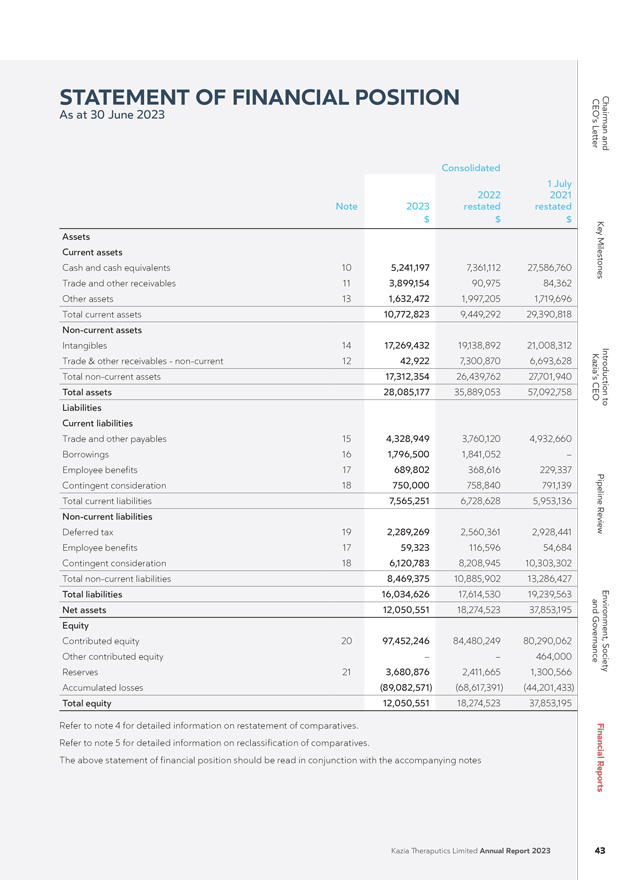
STATEMENT OF FINANCIAL POSITION As at 30 June 2023 CEO’s Chairman Letterand Consolidated 1 July
2022 2021 Note 2023 restated restated $ $ $ AssetsKey Current assets Cash and cash equivalents 10 5,241,197 7,361,112 27,586,760 Milestones Trade and other receivables 11 3,899,154 90,975 84,362 Other assets 13 1,632,472 1,997,205 1,719,696 Total
current assets 10,772,823 9,449,292 29,390,818 Non-current assets Intangibles 14 17,269,432 19,138,892 21,008,312 Trade & other receivables—non-current 12
42,922 7,300,870 6,693,628 Total non-current assets 17,312,354 26,439,762 27,701,940 Kazia’s Total assets 28,085,177 35,889,053 57,092,758 CEOIntroduction to Liabilities Current liabilities Trade and
other payables 15 4,328,949 3,760,120 4,932,660 Borrowings 16 1,796,500 1,841,052 –Employee benefits 17 689,802 368,616 229,337 Contingent consideration 18 750,000 758,840 791,139 Total current liabilities 7,565,251 6,728,628 5,953,136 Pipeline
Non-current liabilities Review Deferred tax 19 2,289,269 2,560,361 2,928,441 Employee benefits 17 59,323 116,596 54,684 Contingent consideration 18 6,120,783 8,208,945 10,303,302 Total non-current liabilities 8,469,375 10,885,902 13,286,427 Total liabilities 16,034,626 17,614,530 19,239,563 Net assets 12,050,551 18,274,523 37,853,195 and Equity Environment, Contributed equity 20 97,452,246
84,480,249 80,290,062 Other contributed equity – – 464,000 GovernanceSociety Reserves 21 3,680,876 2,411,665 1,300,566 Accumulated losses (89,082,571) (68,617,391) (44,201,433) Total equity 12,050,551 18,274,523 37,853,195 Refer to note 4
for detailed information on restatement of comparatives. Refer to note 5 for detailed information on reclassification of comparatives. Financial The above statement of financial position should be read in conjunction with the accompanying
notesReports Kazia Theraputics Limited Annual Report 2023 43